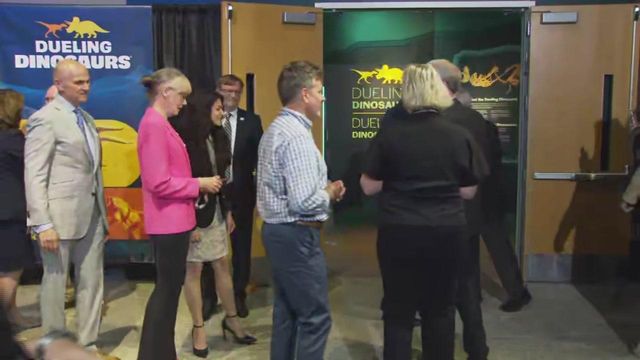Phoenix's month in hell: A 31-day streak of record heat ends

Patients with heatstroke and burns from the asphalt are swamping hospitals. Air conditioners are breaking down at homeless shelters. The medical examiner’s office is deploying trailer-sized coolers to store bodies, for the first time since the early days of COVID-19.
For 31 straight days — from the last day of June through Sunday, the second-to-last day of July — Phoenix has hit at least 110 degrees, not merely breaking its 18-day record in 1974, but setting a significant new one. On Monday, the last day of July, the heat spell finally broke, if only by a few degrees: The temperature reached a high of 108 degrees. Storms offered a slight, temporary respite. The forecast called for 110-plus degree days to return later in the week.
The city smashed through another record last week, racking up the most 115-degree days ever in a calendar year, part of a global heat wave that made July Earth’s hottest month on record.
This has been Phoenix’s July in hell — an entire month of merciless heat that has ground down people’s health and patience in the city of 1.6 million, while also straining a regionwide campaign to protect homeless people and older residents who are most vulnerable.
“I’m so sick of this,” Rae Hicks, 45, said this past week as she sat with her 7-year-old son on the floor of a clammy cooling center in Tempe, their suitcases clustered around them.
It was 118 degrees outside, and they had nowhere to stay after the center closed down that evening, like thousands of other people around Phoenix left homeless by rising rents and a resurgence of evictions. The record heat has made their summer a desperate game of survival — bouncing between libraries, supermarkets and relief centers during the day, and sleeping in motels, cars or shelter beds at night to avoid the scorching streets.
With at least two more hot months ahead, some residents said they did not know how much more they could take.
“It’s wearing on people,” said Kevin Conboy, a physician assistant with Circle the City, a medical charity that treats homeless people across Phoenix. “Everyone’s temperatures are hovering at 100. Everyone. is complaining of feeling so fatigued, and tired.”
Even the group’s mobile medical buses are succumbing to the heat, forcing them out of service to get repaired.
The medical examiner in Phoenix has reported 25 heat-related deaths this year, and said it is also investigating an additional 249 deaths for ties to heat. There were a record-breaking 425 heat-related deaths last year across Maricopa County.
Hospitals around Phoenix also say they treated more people for heat ailments and burns in July compared with previous summers, infusing them with cold saline or packing them into ice-filled body bags that sometimes leak and cause nurses to slip in icy puddles.
“We are very full,” said Dr. Kara Geren, an emergency-medicine doctor at Valleywise Health Medical Center in central Phoenix. “We have everything from heat cramps to heat stroke and death.”
Geren said the emergency department was treating more homeless patients and drug users with heat-related illnesses this summer, as well more people who burn their legs and backs by falling on pavement that can heat up to 180 degrees. This week, a woman in her 80s came to the hospital for burn treatment after falling outside her home, then lying on the searing pavement for two hours before anyone heard her calls for help.
Towering saguaro cactuses are collapsing from the heat, and the agaves, creosote bushes and stubby barrel cactuses that spangle highways are turning yellow. Hiking trails have been closed at midday for more than a month to protect hikers (and the paramedics who have to rescue them).
Even the local news media seemed to hit a breaking point this past week, when The Arizona Republic cried out: “Will the inferno never end?”
Austin Davis, who runs a tiny homeless-outreach charity called AZ Hugs, spends his days trying to answer calls from unsheltered people desperate to avoid sleeping out in the heat.
“I can’t tell you how many people called me crying, asking for a hotel room, saying, I can’t make it through another day like this,” he said.
Many of Phoenix’s shelters are full, and waiting lists for publicly funded housing are weeks or months long, families said in interviews. They find Davis’ number scrawled on whiteboards at cooling centers, get it from shelter employees or other people on the street, and call in a last bid for help. On Thursday afternoon, he had 268 unread text messages.
“My family is sleeping in the park right now myself my husband and our 7 children,” read one. Davis responded by asking for birth dates, income levels and other information he would need to start connecting them with housing and shelter programs and signed off with two heart emoji.
Another call came from Melissa Duckett, 40, who had been sleeping in her car with her wife and their 11-year-old son since being evicted in the spring. Duckett said they had been in a subsidized apartment, but had fallen behind on the rent when she got sick.
When the heat waves first started to bake central Phoenix in late June, they had talked about driving up to Flagstaff, where it was cooler. Then their car died in the heat. Their new respite was a trailer that Davis had fitted out with bunk beds and a working air conditioner as an emergency stopgap for families.
“We’re just going to be happy to be out of the heat,” Duckett said.
This article originally appeared in The New York Times.









